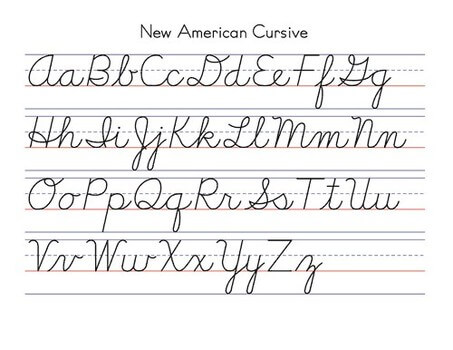Jessica Kerwin Jenkins, reviews a new book on cursive writing, which laments what she sees as the decline in cursive writing, which she thinks is inevitable. The book, The History and Uncertain Future of Handwriting, by Anne Trubek, says Jenkings, urges “a long goodbye to handwriting as we know it and an embrace of a neurological metamorphosis already underway as we adapt to new technology. But her revelatory deep dive also shows just how much we stand to lose.”
 The reviewer criticizes the book for accepting potential benefits to new writing technologies which, at this point, are still vague, and not giving enough credit to the evidence that seem to show more demonstrable benefits attributable to cursive handwriting:
The reviewer criticizes the book for accepting potential benefits to new writing technologies which, at this point, are still vague, and not giving enough credit to the evidence that seem to show more demonstrable benefits attributable to cursive handwriting:
Trubek errs in underplaying the contemporary research that shows handwriting’s role in cognitive development. Studies show that a child drawing a letter freehand activates the neurological centers that reading and writing do in adults, while using a keyboard produces little effect. Children composing text by hand generate more words more quickly, and also express more ideas. Students who take class notes by hand better retain that information, and, fascinatingly, not only does the brain process capital letters and lowercase letters differently, but block printing, cursive and typing each elicit distinctive neurological patterns. It all seems more tantalizing and tangible than the “advantages unimaginable” Trubek believes the future holds. She calls the science behind the new studies “fuzzy” and judges their findings unconvincing. But while American public education has abandoned cursive, France surveyed the evidence and began teaching connected script even earlier, at age 6.
In reality, cursive writing may be making a comeback, with some state’s recently including cursive requirements in their state laws.
Read more here.


